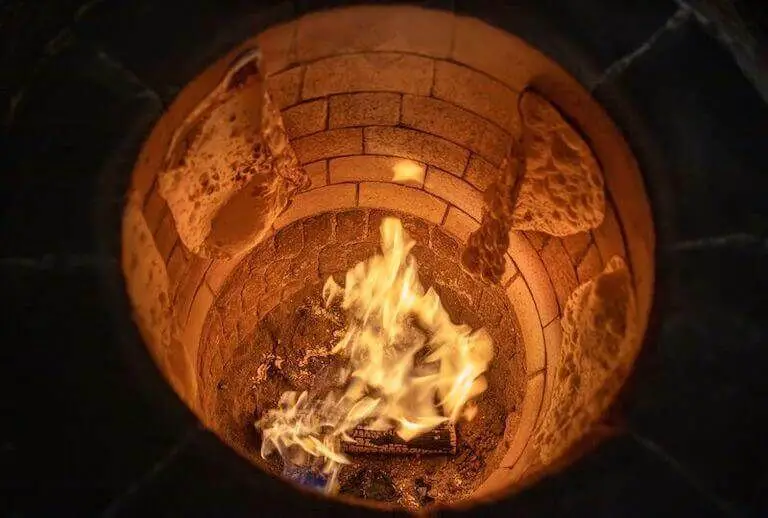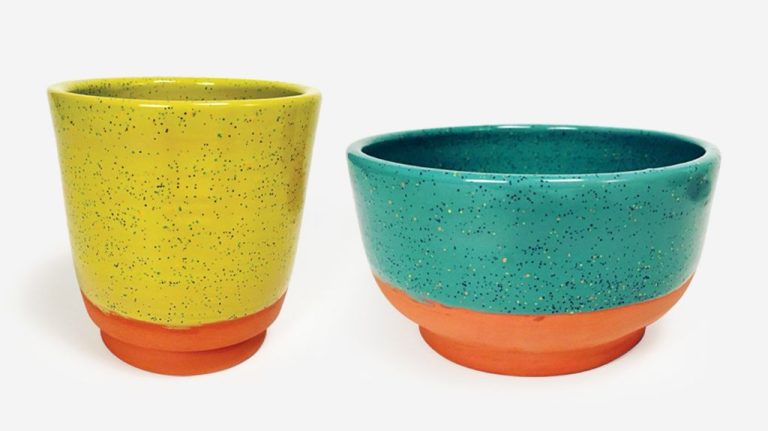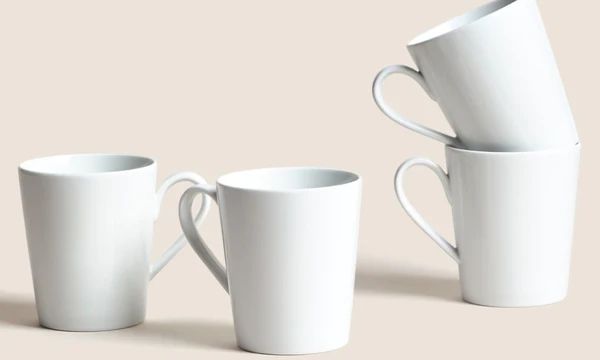How Do You Make Light Gray Hardened Clay?
Hardened clay, also known as air-dry clay, is a crafting material that does not require baking in a kiln or oven to set. It dries and hardens at room temperature. Hardened clay is an accessible and versatile material used to make decorative objects like jewelry, home decor, sculptures, and more. The goal of this guide is to walk through the process of making custom light gray hardened clay. Having the ability to create clay in any color provides endless creative possibilities.
Gather Materials
To make light gray hardened clay, you’ll need to gather the following materials before getting started:
- Air-dry clay or polymer clay – Look for natural clay that doesn’t require oven baking or a synthetic clay that hardens when left out to dry.
- Water – Have clean water on hand to moisten and smooth the clay if needed.
- Gray pigment or paint – Acrylic paint, eyeshadow, chalk pastels or oxide pigments will all work to add color.
- Sculpting tools – Gather sculpting tools like ceramic loops, ribs, rubber-tipped tools, etc to shape the clay.
- Baking supplies – For polymer clay, you’ll need an oven, parchment paper and aluminum foil for baking.
Once you have gathered these basic supplies, you’ll be ready to start working the clay and creating your light gray sculptures.
Choose the Clay
When selecting clay for hardening and creating durable sculptures, you have a few options:
Natural Clay – This is clay dug directly from the earth. It contains minerals that allow it to harden when baked at high temperatures. Natural clay requires a kiln and extremely high heat. It’s more complex to work with for basic crafting.
Polymer Clay – Manufactured from PVC resins, polymer clay hardens when baked at home oven temperatures. It offers bright colors and smooth texture. However, polymer clay can be more expensive and tricky for beginners.
Air-Dry Clay – This clay dries naturally at room temperature. Made from materials like paper, glue and chalk, air-dry clay is affordable and accessible for crafters. It doesn’t require any special tools. The finished product will be relatively lightweight yet durable. This makes air-dry clay the simplest option for hardening clay sculptures at home.
For creating lightweight, hardened clay crafts without any advanced supplies, air-dry clay is the best choice. Look for brands like Crayola Model Magic or Activa Air-Dry Clay that are readily available at craft stores.
Prepare the Clay
Before sculpting with clay, it’s essential to properly prepare it to achieve the right consistency for sculpting and to remove any air bubbles. This process is referred to as “wedging” or “kneading” the clay. Start by cutting or tearing a chunk of clay off your main block. The size will depend on how much clay you need for your project.
On a smooth, clean surface, repeatedly press down into the clay while twisting and folding it over on itself. Apply even pressure as you work the clay. This motion pushes the clay through itself, distributing moisture evenly and forcing out any air pockets. Periodically form the clay back into a ball shape and continue wedging.
You’ll know the clay is ready when it is smooth, uniform in texture, and not sticky. There should be no cracks or dry spots. Well-wedged clay should hold its shape when molded gently without becoming misshapen. The entire wedging process usually takes 5-10 minutes. Take your time to properly condition the clay, as this step is crucial for working with clay successfully.
Add Pigment
Recommend adding a small amount of gray pigment and mixing thoroughly. Start with just a pinch of pigment and add more gradually until you achieve the desired light gray shade. Mix the pigment into the clay thoroughly to ensure it is distributed evenly throughout.
Some options for gray pigments include:
- Titanium dioxide – A common white pigment that will lighten the clay and desaturate the color.
- Carbon black – A very deep black pigment that will darken the clay. Use just a small amount for light gray.
- Payne’s gray – A dark blue-gray pigment perfect for mixing a light gray.
- Neutral tint – A ready-made dark gray pigment that can be mixed with white.
Test your mixed pigment on a small piece of clay and adjust the ratio of pigment as needed. Too much pigment can make the clay difficult to work with. Achieving an even, consistent light gray color will take some trial and error.
Sculpt the Clay
Once the clay has been conditioned and colored, it’s time to start sculpting. There are many techniques and tools you can use to shape light gray hardened clay into beautiful creations:
Hand Sculpting
The most basic sculpting method is using your hands. Knead, roll, pinch, and smooth the clay to form simple or intricate shapes. Hand sculpting gives you direct contact with the material and allows for subtle detailing.
Clay Shapers
These are tools with a variety of shaped tips used to sculpt clay. The rubber tips can blend, smooth, texture, and refine the clay surface. From general shaping to adding fine details, clay shapers are must-have tools.
Cutters
Use cutters and knives to cut shapes and slices out of clay. Cookie cutters, craft knives, and various edged tools help cut precise forms. Use cutters to quickly produce multiple uniform shapes.
Molds
Press clay into molds to recreate detailed forms. Flexible molds made of silicone or rubber can shape clay into 3D designs like flowers, leaves, or geometric patterns. Reuse molds to efficiently make multiples.
Armatures
Build an armature from wire, foil, or other materials to support intricate clay structures and moving parts. Sculpt over the armature base to create anything from posable figurines to delicate jewelry findings.
Get creative with the limitless sculpting possibilities! Let the clay take shape in your hands.
Smoothing and Texturing
One of the most important steps when working with clay is smoothing and texturing the surface. This process helps remove any imperfections and creates an even, polished appearance. There are a few key techniques to keep in mind:
Wet your tools. Having a small bowl or cup of water nearby is essential. Frequently dip your sculpting tool into the water before stroking the clay. The water prevents the clay from sticking and allows you to gently smooth away fingerprints or marks. A wet wooden tool works better than a dry one.
Use soft strokes. Avoid digging or gouging the clay. Use light, feathery brushstrokes instead. Apply even pressure as you glide the tool across the surface. Work slowly and methodically. Rushing can leave scratches or uneven texture.
Blend seamlessly. When smoothing two sections of clay together, avoid leaving sharp edges. Gently meld and blend the clay at the seam for a continuous look. Use water and soft stroking to fade the seam.
Consider the final texture. Will the sculpture be glossy and smooth? Or is some texture desired? Tools like plastic loops, rubber shapers, or clay scrapers can imprint patterns. Fingertips can also create organic indentations. Decide the desired finished appearance before texturing.
With practice and patience, you’ll be able to achieve flawlessly smooth or artfully textured clay surfaces. Proper smoothing and texturing techniques elevate clay art to a professional finish.
Let Clay Dry
After sculpting your light gray hardened clay creation, it’s crucial to let the clay dry completely before baking. Any moisture left in the clay will rapidly turn to steam when baked, causing cracks and fissures in the finished piece.
There are a few tips for properly drying clay:
-
Let the clay air dry fully. Avoid accelerated drying like direct sunlight or heat, which can dry the outer surface faster than the interior and cause cracking.
-
Dry for the recommended time based on the clay thickness. Thinner pieces may only need 24 hours while thicker sculpted pieces could require 5 days or more.
-
Consider using a dehydrator if you want to speed up the drying time. Just keep the temperature under 130°F.
-
Check for dryness by feeling the surface. It should be smooth and matte, not tacky.
-
Pay extra attention to drying any enclosed areas thoroughly by providing ventilation holes.
Proper drying is a key step to ensure your sculpted light gray hardened clay artwork cures fully and without cracks when baked. Taking the time to let the clay dry completely will lead to a stronger finished product.
Baking the Clay
Baking is a crucial step for hardening and finalizing your clay sculpture. Choose an oven temperature between 130°F and 275°F depending on the type of clay you used. Check the packaging or manufacturer instructions for specific temperature guidelines. Preheat your oven to the desired temperature before baking.
Bake the clay sculpture for 15-20 minutes per 1/4 inch of thickness. For example, if your sculpture is 1 inch thick, bake it for 60-80 minutes. Thicker pieces will require longer bake times. Start with the minimum recommended time and check frequently to prevent over-baking. The clay should be firm but not burnt.
Once baked, turn off the oven and leave the sculpture inside for 30-60 minutes to cool gradually. This prevents cracking from sudden temperature changes. Don’t remove it until the oven has fully cooled. Once cooled, the sculpture will be hardened and ready for any finishing touches.
Finishing Touches
Once your light gray hardened clay artwork is baked and completely cooled, there are some optional finishing steps you can take to enhance the look and durability of the piece:
Sanding – Use fine grit sandpaper or sanding sponges to smooth any rough edges or imperfections. Start with a higher grit sandpaper like 400 and work your way up to 1000 or 2000 grit for a silky smooth finish.
Sealing – Apply a thin coat of sealant like polyurethane, epoxy resin, or UV resin. This will give the clay a glossy finish and protect the surface from moisture, oils and dirt. Allow each coat to fully cure before adding another.
Waxing – Rub a thin coat of paste wax or sculpting wax into the surface. This will give the clay a soft satin finish. Buff with a soft cloth to remove any excess wax.
Painting – Acrylic paint can be used to add color accents or designs. Make sure to use paint formulated for clay or mineral spirits so it adheres properly. Seal painted areas for protection.
Antiquing/Staining – For an aged look, apply antique glaze, gel stains, or thinned acrylic paint. Wipe away excess stain on the surface to highlight the recessed areas.
Take care not to over-handle or damage the baked clay when finishing. Avoid soaking the piece in water or other liquids. By adding a final protective layer and handling the clay artwork gently, you can ensure it lasts for years to come.




